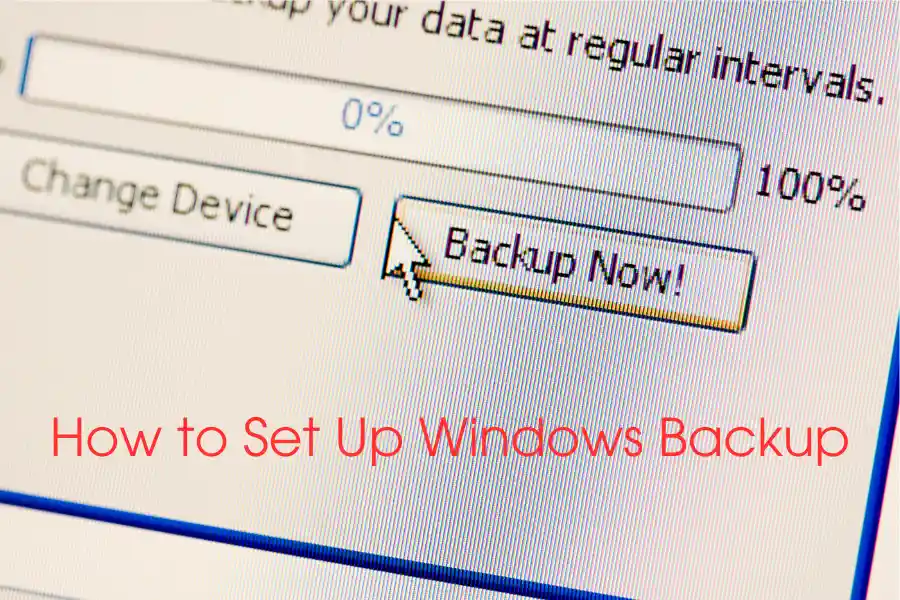
In the digital age, where technology influences every aspect of life, securing our priceless files and vital setups has become crucial. Imagine the chaos resulting from an expected computer error, causing you to lose priceless memories, important work documents, or specific system setups.
This is where the significance of Windows Backup comes into play. This article delves into Windows Backup and unravels its importance in protecting your vital disk files and system settings.
Explore how Windows Backup shields your digital life from data loss and tech risks. Dive into its features and understand the foundation that ensures your data’s safety.
Understanding Windows Backup: What is it?
Windows Backup is a vital tool provided by Microsoft Windows. This feature lets users make copies of important files and system settings. These backups guard against unplanned actions like viruses or system failures that can cause data loss. Windows Backup is a safety precaution in our dynamic digital world, securing your priceless data and providing peace of mind.
Key Benefits of Windows Backup

Data Resilience: Windows Backup’s main advantage is the protection it provides for your data. When files get corrupted or hard drives fail, a recent backup ensures your important files are safe and can be quickly restored.
Ease of Restoration: Windows Backup makes recovery easy. The backup tool gradually walks users through the process, making it easy to recover one file or their entire system.
Protection Against Ransomware: Most attacks use ransomware, which locks data till you pay a fee. According to the hackers, you can use Windows Backup to restore your PC to its pre-attack state.
Smooth System Transition: Windows Backup simplifies migration when upgrading to a new computer or replacing a hard drive. Restoring your backup to the new hardware gets your system up and running with minimal hassle.
Why Do You Need Windows Backup?
Data Loss Protection: Computers can be unpredictable. They might crash, get infected by viruses, or experience hardware failures. Regularly creating backups ensures your data remains safe, even in worst-case scenarios.
Accidental Deletion: We’ve all been there—accidentally deleting an important file or folder. With backups, you can retrieve these items without worrying.
Smooth Transitions: A backup greatly eases your life if you need to restart Windows or get a new computer. Swiftly restoring your files and settings can save hours of complex setup.
Peace of Mind: Your vital information is secured to rest easy. If the unexpected occurs, there’s no need to freak out!
Types of Windows Backup
File History: This feature instantly backs up your files, including documents, photos, and audio recordings, to an outside drive or a network location. You can “go all the way back time” and retrieve earlier editions of your files using this feature.
System Image Backup: This creates an image of your complete system—including the operating system, preferences, and installed software. It’s like a comprehensive blueprint of your computer, making recovery more manageable after a significant issue.
Backup and Restore (Windows 7): While this older method still works in newer versions of Windows, it’s recommended to use more unique features like File History and System Image Backup for better efficiency and ease of use.
How to Set Up Windows Backup

Open Settings: Click on the “Start” button, then select “Settings” (the gear-shaped icon).
Update & Security: Inside Settings, choose “Update & Security.”
Backup: On the left sidebar, click on “Backup.”
Add a Drive: To choose a drive to keep your backups on, select “Add a Drive” under “Back up via File History.”
More Options: Click “More Options” to access additional options such as how often to backup, the length of time to maintain backups, and what folders you should include or omit.
Backup Now: To manually start a backup, click “Back up now.
Top 5 Windows Backup Software
Acronis Cyber Protect Home Office: Complete backup solution with modern functions like disc cloning, cloud backup, and cyber defense.
EaseUS Todo Backup: This simple backup tool supports system, disc, and file backups with choices for complete, gradual, and split backups.
Macrium Reflect: It is a stable product for home and office use. It provides vital recovery tools and quick visual backups.
Paragon Backup & Recovery: This software provides numerous backup options, including complete, progressive, and separate backups. Its simple design makes it ideal for novices.
Windows Backup and Restore: A built-in tool for simple system and file backups. It is ideal for basic backup needs without third-party software.
Final Thoughts
In the realm where digital assets are paramount, Windows Backup emerges as the ultimate guardian for vital disk files and settings. It protects against data loss, hardware glitches, and cyber threats.
Regular backups ensure that your memories, work, and essential documents remain intact, even in digital mishaps. So, take a proactive step today—safeguard your digital life with Windows Backup!
To get updates and learn more, visit our blog, baddiehun.co.
Hi there! I’m Ryan Brandon, an Admin, and writer at Baddiehun.co with over 30 years of experience. I love playing with words, covering news, diving into business and Technology topics, or creating beautiful poems and stories. Making complex things easy to understand is my superpower. Join me on this writing journey, where I bring words to life in various exciting ways!

Leave a Reply